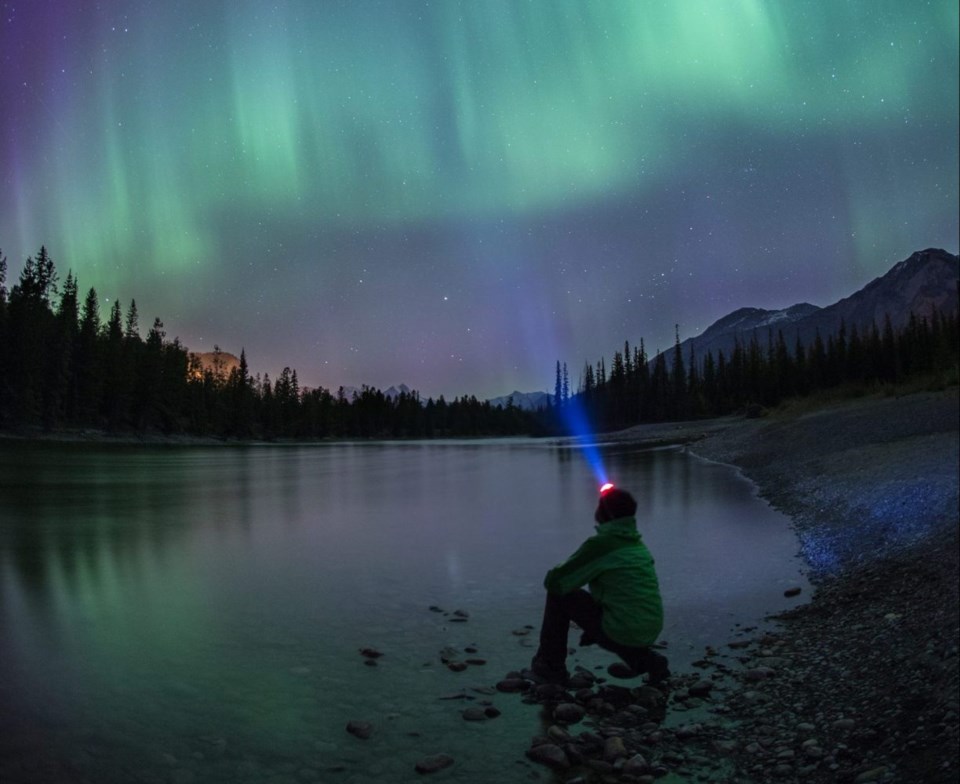Kristina Bergen | Special to the 51����
As the first shades of green herald Spring’s return to Jasper Dark Sky Preserve, it's getting warm enough to spend some serious time studying the sky. Below is a brief list of where to look and what you’ll see.
Finding the Lion Heart
Spring is the best time of year for finding Leo the Lion, which is one of the largest constellations in the northern sky. Leo is visible as soon as darkness falls and for most of the night from late April until June.
The key to spotting Leo is to imagine a straight line from the Big Dipper to a backwards question mark pattern known as the Sickle, which forms the head and shoulders of the lion. At the bottom of the Sickle is Regulus, a sparkling blue-white star known as the Lion’s heart.
Leo is home to a number of deep sky objects including several large quasar groups and six galaxies. Definitely worth taking a look, in our opinion.
Lopsided box tipped on its side
One of the largest and oldest known star patterns in the sky is Virgo, the Maiden of Spring, catalogued by the Greek astronomer Ptolomy in the 2nd century.
Located next to the constellation Leo, Virgo looks like a lopsided box lying on its side, but is actually home to several exoplanets and about a dozen Messier objects.
Virgo has a distinct Y line of stars that leads to its brightest star Spica. To find Spica, use the memory prompt, “Follow the arc to Arcturus, then speed on to Spica.” That means follow the curve of the Big Dipper’s handle down to the southeast until you find the bright star Arcturus, then continue the arc to Spica, the next bright star.
Halley’s Comet debris trail
Although it won’t be seen again by casual sky watchers until 2061, Halley’s Comet gifts us with the Eta Aquarids meteor shower each May when the Earth passes through the comet’s debris trail of ice and dust.
Eta Aquarids meteors are fast, travelling at about 148,000 miles per hour (that’s 66 kilometers per second) and leave glowing debris trails in the wake of the meteor as they collide with our atmosphere.
Although it will be competing with a full moon, this meteor shower will peak on Saturday, May 6 and will appear to skim the horizon of the pre-dawn sky.
If it's dark and clear, find an east-facing location free from light, let your eyes adjust to the dark for about a half hour, then enjoy the show until dawn.
More Isosceles than Equilateral
Why is the Summer Triangle on our list of what to view in the Spring, you may ask? Because it serves as a stellar calendar: when you see the Summer Triangle in the eastern sky at dusk, it marks the change of seasons from late spring to early summer. Several months later, when it appears high in the south at twilight, summer is turning to Fall.
For those of you who remember geo-trig from highschool, the Summer Triangle forms an isosceles triangle from three bright stars that come from three different constellations.
At nightfall this Spring, look for Vega, the most brilliant star in the eastern sky. To its lower left is Deneb, the brightest star in Cygnus the Swan. To the lower right, forming the tip of the Triangle is Altair, the brightest star in the constellation Aquila the Eagle. Et voila, you have the Summer Triangle!
In Jasper, we can see sections of the Triangle for much of the year, but it looks its very best on a moonless summer night when the Milky Way appears to glide right through it.
Kristina Bergen is the manager of strategic initiatives for the Jasper Planetarium. Her favorite shade of green is the almost-celery color of tree buds starting to open that can only be seen in the Spring.




